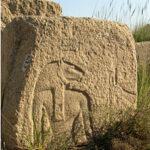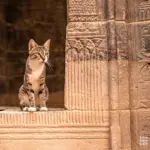Dimitris Vlachos[1]
The Domestication of Man on a Full Moon Night
A Strange Cat-Critique on Humanism[2]
Part 1: The Book of Cats
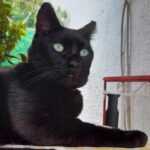 In memory of our beloved Nemo,
In memory of our beloved Nemo,
2018-2024
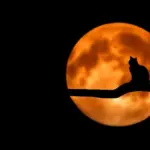 The evolution of the human race, that is, its civilization, was decided on a summer night with a full moon. Exactly when and where this event took place, we do not know for certain. Also, we do not know if it indeed happened in the past, is happening somewhere now, or will happen on a full moon in the future. However, it is mentioned in a chapter of the Book of Cats, which was found in the ancient Egyptian city of Bubastis in Lower Egypt. There, in this sacred city of cats, the papyri were discovered written in demotic Egyptian hieroglyphic script, constituting a summary of the original book. The writing of the lost original Book of Cats is placed during the period of the Old Kingdom (2575-2150 BC), while the papyri of its summarized version are much later (2nd century BC), almost contemporary with the Rosetta Stone. What we know for certain is that the Book of Cats was particularly beloved in the circles of the priesthood of this Egyptian city, where the cat-shaped goddess Bastet was worshiped with grandeur.
The evolution of the human race, that is, its civilization, was decided on a summer night with a full moon. Exactly when and where this event took place, we do not know for certain. Also, we do not know if it indeed happened in the past, is happening somewhere now, or will happen on a full moon in the future. However, it is mentioned in a chapter of the Book of Cats, which was found in the ancient Egyptian city of Bubastis in Lower Egypt. There, in this sacred city of cats, the papyri were discovered written in demotic Egyptian hieroglyphic script, constituting a summary of the original book. The writing of the lost original Book of Cats is placed during the period of the Old Kingdom (2575-2150 BC), while the papyri of its summarized version are much later (2nd century BC), almost contemporary with the Rosetta Stone. What we know for certain is that the Book of Cats was particularly beloved in the circles of the priesthood of this Egyptian city, where the cat-shaped goddess Bastet was worshiped with grandeur.
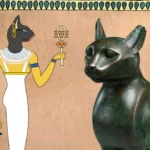 The Book, according to its surviving summary, narrates the history of the world through the eyes of cats. The story of humanity constitutes only a brief chapter in the overall narrative, which is characterized as “fortunately a short parenthesis in the history of creation and life in the universe.” The author or authors of the Book must have belonged to the priesthood of the goddess Bastet, which is why the position of cats and the role attributed to them in the salvation of the planet are of central importance in the interpretation and understanding of the world. It is an entirely non-humanistic feline cosmology and theology.
The Book, according to its surviving summary, narrates the history of the world through the eyes of cats. The story of humanity constitutes only a brief chapter in the overall narrative, which is characterized as “fortunately a short parenthesis in the history of creation and life in the universe.” The author or authors of the Book must have belonged to the priesthood of the goddess Bastet, which is why the position of cats and the role attributed to them in the salvation of the planet are of central importance in the interpretation and understanding of the world. It is an entirely non-humanistic feline cosmology and theology.
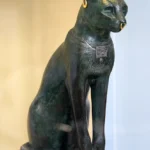 We might say that the cat, according to the English translation of the Book’s summary, symbolizes and expresses the universal nature, offering us through its feline perspective a completely different, non-anthropocentric view of the world and of humanity itself. Thus, in the Book of Cats, humans are presented simply as an indifferent animal in the history of the universe. Nothing divine or spiritual is attributed to them, nor any serious higher mission in the planet’s salvation plan. Humans play more of a supporting role in a script written by cats and, through them, the goddess Bastet. The presence and evolution of humans on Earth are explicitly described in the papyri as destructive to other animals and life itself on the planet. The spread of humans across the Earth and their civilization is, according to the summary of the lost Book of Cats, a plan conceived and implemented by the cats on a full moon night, with the goddess Bastet behind them. According to this plan of the cat-shaped goddess, humans, from the wild animals they were, had to be domesticated, that is, to create civilization. However, this civilization would ultimately lead to the extinction of most animal species and the destruction and desolation of the planet’s natural environment. From this environmental destruction, a new, balanced, non-human world would be born, operating according to the principles of feline naturalistic philosophy and the teachings of the priesthood of the cat-shaped goddess. Those humans who would join the worship of the goddess, abandoning their hegemonic humanistic ambitions and implementing the principles and practices of Bastet’s feline religion, would be cured of the “disease” of humanism and live a harmonious life with other animal species and the organic and inorganic nature.
We might say that the cat, according to the English translation of the Book’s summary, symbolizes and expresses the universal nature, offering us through its feline perspective a completely different, non-anthropocentric view of the world and of humanity itself. Thus, in the Book of Cats, humans are presented simply as an indifferent animal in the history of the universe. Nothing divine or spiritual is attributed to them, nor any serious higher mission in the planet’s salvation plan. Humans play more of a supporting role in a script written by cats and, through them, the goddess Bastet. The presence and evolution of humans on Earth are explicitly described in the papyri as destructive to other animals and life itself on the planet. The spread of humans across the Earth and their civilization is, according to the summary of the lost Book of Cats, a plan conceived and implemented by the cats on a full moon night, with the goddess Bastet behind them. According to this plan of the cat-shaped goddess, humans, from the wild animals they were, had to be domesticated, that is, to create civilization. However, this civilization would ultimately lead to the extinction of most animal species and the destruction and desolation of the planet’s natural environment. From this environmental destruction, a new, balanced, non-human world would be born, operating according to the principles of feline naturalistic philosophy and the teachings of the priesthood of the cat-shaped goddess. Those humans who would join the worship of the goddess, abandoning their hegemonic humanistic ambitions and implementing the principles and practices of Bastet’s feline religion, would be cured of the “disease” of humanism and live a harmonious life with other animal species and the organic and inorganic nature.
In the post-humanistic and post-human new feline era envisioned by Bastet’s priesthood, the remaining humans would not distinguish themselves from nature as isolated individuals outside of it, but would be one with it. They would not consider nature given to them to exploit according to their desires, as per the anthropocentric maxim of Genesis (chapter 9.7) “As for you, be fruitful and increase in number; multiply on the earth and increase upon it…” Furthermore, the foundations of human civilization, such as family, religion, humanistic ethics, and political and social organization as we know them today, will have no place in the post-human history of the planet. Only science, purified of humanistic prejudices and stereotypes about the primacy of humans over other forms of life, will continue to exist and develop freely. Because, according to feline epistemology, science free from human desires and distortions is a universal good that favors the free development of all forms of life and balance on the planet. In the post-human era, according to the strange feline cosmology of Bastet and her priesthood, humans will not be masters of the Earth nor even its managers, but simply one link equal to all other forms of life.
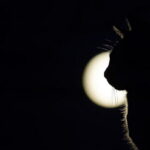 How the decision was made by the cats on a full moon night to domesticate humans, and all the other details of this monumental event for human civilization, will be outlined next. However, we warn you. Those who cannot bear a non-anthropocentric (religious or secular) narrative and interpretation of human civilization as a spiraling upward trajectory of continuous progress would do well to rest on their religious, secular, political, and “scientific” certainties and not be scandalized by reading this offensive and derogatory narrative of the Book of Cats about the greatness of the human species.
How the decision was made by the cats on a full moon night to domesticate humans, and all the other details of this monumental event for human civilization, will be outlined next. However, we warn you. Those who cannot bear a non-anthropocentric (religious or secular) narrative and interpretation of human civilization as a spiraling upward trajectory of continuous progress would do well to rest on their religious, secular, political, and “scientific” certainties and not be scandalized by reading this offensive and derogatory narrative of the Book of Cats about the greatness of the human species.
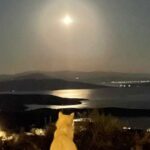 Moreover, the full moon and cats, when combined with the contemplation of the summer night, create a feeling of uncertainty, insecurity, an illusory waking dream, and, why not, ultimately a charming deception. If we add to the above caution that the original Book of Cats has been lost and we are limited to its summary in a much later form of Egyptian hieroglyphic script and its translation into our language, then we understand that we cannot have, if not absolute, not even relative certainty that we are reading what the original authors of the Book intended. Finally, it is our firm belief as modern anti-metaphysical, secular, and democratic citizens of the Northern Hemisphere, that the Egyptian priesthood historically had interests in the prevalence of the mystic worship of the cat-shaped Bastet and her soteriological message. This is the message we today disparagingly call religious “obscurantism,” “medievalism,” “regression,” “priestly deception,” and devalue it.
Moreover, the full moon and cats, when combined with the contemplation of the summer night, create a feeling of uncertainty, insecurity, an illusory waking dream, and, why not, ultimately a charming deception. If we add to the above caution that the original Book of Cats has been lost and we are limited to its summary in a much later form of Egyptian hieroglyphic script and its translation into our language, then we understand that we cannot have, if not absolute, not even relative certainty that we are reading what the original authors of the Book intended. Finally, it is our firm belief as modern anti-metaphysical, secular, and democratic citizens of the Northern Hemisphere, that the Egyptian priesthood historically had interests in the prevalence of the mystic worship of the cat-shaped Bastet and her soteriological message. This is the message we today disparagingly call religious “obscurantism,” “medievalism,” “regression,” “priestly deception,” and devalue it.
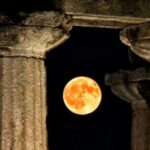 “… few are the moonlit nights that I’ve cared for,” says our Greek humanist poet Giorgos Seferis (1963, Nobel Prize for Literature) in his poem “Last Station” (1944), expressing his discomfort with the enchantment of the moon that numbs the senses and the human mind. But cats, silent and focused on the full moon, transport us with their contemplation to another dimension of observing human civilization. Those who have feline curiosity for this unknown dimension of the creation and evolution of our civilization should hold their breath and attempt, with the courage and determination of a feline, a risky leap into the moonlight and over the dark abyss by reading the continuation that follows. They might succeed in climbing to a higher peak that offers the view of another world, more real than the one we know today.
“… few are the moonlit nights that I’ve cared for,” says our Greek humanist poet Giorgos Seferis (1963, Nobel Prize for Literature) in his poem “Last Station” (1944), expressing his discomfort with the enchantment of the moon that numbs the senses and the human mind. But cats, silent and focused on the full moon, transport us with their contemplation to another dimension of observing human civilization. Those who have feline curiosity for this unknown dimension of the creation and evolution of our civilization should hold their breath and attempt, with the courage and determination of a feline, a risky leap into the moonlight and over the dark abyss by reading the continuation that follows. They might succeed in climbing to a higher peak that offers the view of another world, more real than the one we know today.
*
Part 2: The Loquacious Monkey
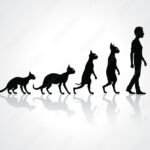 “…and the loquacious monkey, unbeknownst to him, was tasked with executing the plan to destroy life on the planet, a task that would be accomplished over the next 12,000 years. Following this brief dominion of the loquacious monkey on earth, there would come a brilliant period of recreation and prosperity, even the emergence of new advanced forms of life, in which the loquacious monkey himself might participate, as he might be transformed into a true human if he were initiated into the worship of the goddess. The earth would become the blessed domain of the goddess Bastet, where universal harmony, the balance between all forms of life, and compassion would reign. The decision to implement the plan of destruction and recreation of life on the planet was silently and unanimously made by the cats and the goddess Bastet on a night with a full moon. This decision will be periodically renewed in the light of the full moon. And every time the loquacious monkey believes he is ascending a step of technological and cultural progress, he will actually be accelerating the destruction and desertification of the earth, as well as his own extinction and possible transformation. Our Venerable Mother, the Moon, with all her pulsating light, has ratified this decision, and we, the priests of Bastet, preserve it inviolable from the misleading interpretations of the loquacious monkey and convey it only to the initiated humans of the future.”
“…and the loquacious monkey, unbeknownst to him, was tasked with executing the plan to destroy life on the planet, a task that would be accomplished over the next 12,000 years. Following this brief dominion of the loquacious monkey on earth, there would come a brilliant period of recreation and prosperity, even the emergence of new advanced forms of life, in which the loquacious monkey himself might participate, as he might be transformed into a true human if he were initiated into the worship of the goddess. The earth would become the blessed domain of the goddess Bastet, where universal harmony, the balance between all forms of life, and compassion would reign. The decision to implement the plan of destruction and recreation of life on the planet was silently and unanimously made by the cats and the goddess Bastet on a night with a full moon. This decision will be periodically renewed in the light of the full moon. And every time the loquacious monkey believes he is ascending a step of technological and cultural progress, he will actually be accelerating the destruction and desertification of the earth, as well as his own extinction and possible transformation. Our Venerable Mother, the Moon, with all her pulsating light, has ratified this decision, and we, the priests of Bastet, preserve it inviolable from the misleading interpretations of the loquacious monkey and convey it only to the initiated humans of the future.”
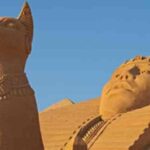 This excerpt from the infuriating concluding paragraph of the summary of the Book of Cats, found in Bubastis in Lower Egypt, closes the chapter titled “The Loquacious Monkey and His Mission on Earth.” I share the reader’s indignation at the insulting characterization of humans as “loquacious monkeys.” It is evident in this characterization the disdain the priesthood of the cat-like goddess Bastet shows for human language and speech. The quintessential distinguishing feature of humans from animals, language and reason—the essence of humanism and the foundation of our civilization—is dismissed as “chatter” by the reactionary Egyptian priesthood.
This excerpt from the infuriating concluding paragraph of the summary of the Book of Cats, found in Bubastis in Lower Egypt, closes the chapter titled “The Loquacious Monkey and His Mission on Earth.” I share the reader’s indignation at the insulting characterization of humans as “loquacious monkeys.” It is evident in this characterization the disdain the priesthood of the cat-like goddess Bastet shows for human language and speech. The quintessential distinguishing feature of humans from animals, language and reason—the essence of humanism and the foundation of our civilization—is dismissed as “chatter” by the reactionary Egyptian priesthood.
However, putting aside our justifiable and human indignation at this characterization, let us attempt to understand the message brought by the authors of the Book of Cats several thousand years ago and explore the relationship that cats, the full moon, and the unsuspecting protagonist of this planet’s soteriological drama, the human, “the loquacious monkey,” may have with this message.
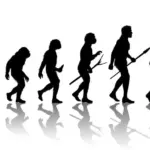 Let us first look at the historical and archaeological data. About 10,000-11,000 years ago, humanity made a decision that changed its life. Humans began to systematically cultivate plants and domesticate animals. From hunters-gatherers and nomads in search of food, they became farmers, permanently settled in one place. Previously, humans moved in small groups in search of food but worked less to secure it. While hunter-gatherers consumed smaller quantities of food, they certainly ate healthier and did not suffer from infectious diseases (due to overcrowding), food allergies (gluten and lactose intolerance), rotten teeth (due to consuming boiled grains and starch), and periodic famines that plagued permanently settled agricultural populations. These are the findings of archaeologists studying anthropological discoveries.
Let us first look at the historical and archaeological data. About 10,000-11,000 years ago, humanity made a decision that changed its life. Humans began to systematically cultivate plants and domesticate animals. From hunters-gatherers and nomads in search of food, they became farmers, permanently settled in one place. Previously, humans moved in small groups in search of food but worked less to secure it. While hunter-gatherers consumed smaller quantities of food, they certainly ate healthier and did not suffer from infectious diseases (due to overcrowding), food allergies (gluten and lactose intolerance), rotten teeth (due to consuming boiled grains and starch), and periodic famines that plagued permanently settled agricultural populations. These are the findings of archaeologists studying anthropological discoveries.
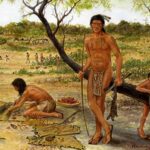 Women of hunter-gatherers also gave birth to the next child every four to five years, making their lives more bearable compared to women of agricultural populations. This is because in non-agricultural populations, breastfeeding often lasts until the child is three to four years old, after which a new pregnancy occurs for the mother. Thus, their child, who would be five years old at weaning when the next one was born, could walk and eat on its own, following the group, while the mother would not have to carry and care for two infants simultaneously, which would happen if she gave birth every two years. The human population of hunter-gatherers was relatively small and births were controlled due to food supply and living conditions. But generally, hunter-gatherers were healthier compared to, for example, the populous groups crowding the villages and cities of the agricultural societies of the Fertile Crescent (Egypt-Mesopotamia). And this is confirmed by archaeologists today.
Women of hunter-gatherers also gave birth to the next child every four to five years, making their lives more bearable compared to women of agricultural populations. This is because in non-agricultural populations, breastfeeding often lasts until the child is three to four years old, after which a new pregnancy occurs for the mother. Thus, their child, who would be five years old at weaning when the next one was born, could walk and eat on its own, following the group, while the mother would not have to carry and care for two infants simultaneously, which would happen if she gave birth every two years. The human population of hunter-gatherers was relatively small and births were controlled due to food supply and living conditions. But generally, hunter-gatherers were healthier compared to, for example, the populous groups crowding the villages and cities of the agricultural societies of the Fertile Crescent (Egypt-Mesopotamia). And this is confirmed by archaeologists today.
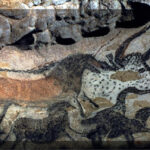 So when humans, experimenting, decided to cultivate a handful of seeds they held in their palms, their lives changed radically. The agricultural revolution is historiographically documented and linguistically formulated as a “rational human decision” that resulted in not only changing the human species genetically (genetic diversity due to genetic mutations) but also human societies and what we collectively call “civilization,” with consequences for life on the entire planet. And indeed, in agricultural societies, mortality was high, but the large quantity, even if not qualitatively good for health food (mainly boiled grains and starch), resulted in a birth explosion. Births far outnumbered deaths, thus achieving the biblical “As for you, be fruitful and increase in number; multiply on the earth and increase upon it…” Along with this significant increase in the human population on earth due to the agricultural revolution, we could say simplistically and “economically,” appeared class societies, empires, wars for territorial conquest, plagues, famines, deforestation, environmental destruction, and many other goods later (more books) and evils (fewer trees).
So when humans, experimenting, decided to cultivate a handful of seeds they held in their palms, their lives changed radically. The agricultural revolution is historiographically documented and linguistically formulated as a “rational human decision” that resulted in not only changing the human species genetically (genetic diversity due to genetic mutations) but also human societies and what we collectively call “civilization,” with consequences for life on the entire planet. And indeed, in agricultural societies, mortality was high, but the large quantity, even if not qualitatively good for health food (mainly boiled grains and starch), resulted in a birth explosion. Births far outnumbered deaths, thus achieving the biblical “As for you, be fruitful and increase in number; multiply on the earth and increase upon it…” Along with this significant increase in the human population on earth due to the agricultural revolution, we could say simplistically and “economically,” appeared class societies, empires, wars for territorial conquest, plagues, famines, deforestation, environmental destruction, and many other goods later (more books) and evils (fewer trees).
But let us now return to the Book of Cats to interpret its dark meaning, utilizing the above archaeological and historical data. Let us narrate the story of Bastet’s soteriological message in our own way.
 One summer night with a full moon, 10,000 years ago, people from one of the newly established agricultural communities of farmers are gathered and discussing in the light of the full moon. With them are the cats. These are fixated on the moon. And naturally, as cats, they do not speak, nor do they meow. They simply daydream, remaining still with their eyes fixed on the moon, as if silently communicating with it and with each other. It is true that since humans began cultivating the land and creating the first granaries for their grains, cats approached them. And seeing them hunting and catching rodents attracted by the grains, humans thought they should domesticate the cats because they would be useful. “We feed them, place them in the granaries and houses. That is, we domesticate them. And thus, we will solve the problem of rodents damaging our harvest.” Naturally, the problem of rodents was not solved by the cats. But humans wished for this, dreamed of it, and eventually thought it. But this thought came from humans.
One summer night with a full moon, 10,000 years ago, people from one of the newly established agricultural communities of farmers are gathered and discussing in the light of the full moon. With them are the cats. These are fixated on the moon. And naturally, as cats, they do not speak, nor do they meow. They simply daydream, remaining still with their eyes fixed on the moon, as if silently communicating with it and with each other. It is true that since humans began cultivating the land and creating the first granaries for their grains, cats approached them. And seeing them hunting and catching rodents attracted by the grains, humans thought they should domesticate the cats because they would be useful. “We feed them, place them in the granaries and houses. That is, we domesticate them. And thus, we will solve the problem of rodents damaging our harvest.” Naturally, the problem of rodents was not solved by the cats. But humans wished for this, dreamed of it, and eventually thought it. But this thought came from humans.
“We will domesticate them. They will think that we are here to hunt their mice and that they keep us for our utility. The loquacious monkeys think in utilitarian terms, but their decision is fundamentally emotional and irrational, as indeed are all their decisions. Their logic is a pretext. What characterizes the loquacious monkeys and differentiates them from other animal species is their ability to use language to create stories. Their greatest pleasure is storytelling. And although other animals communicate by meowing, mooing, barking, bleating, chirping, using their own language, the loquacious monkey creates grand and small narratives by playing with sounds and words. He even takes his language so seriously that he believes the stories he creates with it are true and correspond to reality. And when a story created by one of the monkeys enchanted by the full moon pleases other loquacious monkeys, it is not just considered a beautiful narrative but believed as the one and only truth. This story as a truth must now be accepted, kindly or by force, by all other loquacious monkeys. So, the loquacious farming monkey created his new tale in the light of the full moon, which favors daydreaming and storytelling: ‘We need cats because they catch mice and thus protect our crops. Let us domesticate them,’ he says.
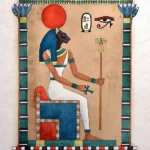 However, the stories of the loquacious monkeys hide the truth, because this species of monkey cannot live with the truth but only with the illusion created by their narratives. Their life seems so unbearable to them that they cannot live it otherwise. And what is the truth? The truth is that the loquacious monkey is a sick animal. He cannot sit still without always doing something, without being constantly busy with something. He cannot escape the internal noise of his thoughts even when daydreaming in the light of the full moon. That is why he always seeks tranquility. Because he does not have it. We cats, who have it, do not seek it. We simply enjoy it.
However, the stories of the loquacious monkeys hide the truth, because this species of monkey cannot live with the truth but only with the illusion created by their narratives. Their life seems so unbearable to them that they cannot live it otherwise. And what is the truth? The truth is that the loquacious monkey is a sick animal. He cannot sit still without always doing something, without being constantly busy with something. He cannot escape the internal noise of his thoughts even when daydreaming in the light of the full moon. That is why he always seeks tranquility. Because he does not have it. We cats, who have it, do not seek it. We simply enjoy it.
The loquacious monkey cannot look at the moon for hours like we do without thinking about anything. He cannot sleep for 20 consecutive hours, even if his stomach is full, even if he lacks nothing. The loquacious monkey envies us cats because, without creating stories and without seeking meaning to live through them, we can enjoy our feline life. The permanently restless loquacious monkey envies us because he sees us now daydreaming, focused on the full moon. He feels that we have access to another reality that he does not. He envies our tranquility, fullness, and happiness. And that is why he will attribute to us, through his stories, qualities we do not possess and that he would like to have himself.
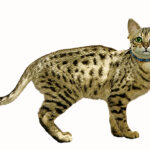 They exterminate the mice, some monkeys will say about us cats, and that’s why we are necessary to them. They have seven lives, others will say. They are spiritual animals and communicate with the divine, the artists and their priests will say. Other chattering monkeys will create stories of hatred about the black ones among us, saying that we bring bad luck and are instruments of witches. With their stories, the chattering monkeys will both adore and despise us. This is what they know and this is what they do, a rational animal would say. Chattering, these monkeys who like to call themselves “humans,” tell stories about everything. But we cats know, as does our cat-goddess Bastet, and our Revered Mother the Moon now full with all its prophetic light, that the taming and creation of the culture of the chattering monkey took place on a full moon night when a chattering monkey narrated the story we inspired in him, we cats, our goddess, and the moon. And so, the wheel of destruction and salvation of the earth will begin to turn.
They exterminate the mice, some monkeys will say about us cats, and that’s why we are necessary to them. They have seven lives, others will say. They are spiritual animals and communicate with the divine, the artists and their priests will say. Other chattering monkeys will create stories of hatred about the black ones among us, saying that we bring bad luck and are instruments of witches. With their stories, the chattering monkeys will both adore and despise us. This is what they know and this is what they do, a rational animal would say. Chattering, these monkeys who like to call themselves “humans,” tell stories about everything. But we cats know, as does our cat-goddess Bastet, and our Revered Mother the Moon now full with all its prophetic light, that the taming and creation of the culture of the chattering monkey took place on a full moon night when a chattering monkey narrated the story we inspired in him, we cats, our goddess, and the moon. And so, the wheel of destruction and salvation of the earth will begin to turn.
These outrageous claims are recorded in the Book of Cats, which the reader, after reading and setting aside their justifiable anger, might not take seriously at all but rather laugh at the naivety of its imaginative authors.
[1] The philologist – writer Dimitris Vlachos holds a degree in Greek philology with a specialization in History and postgraduate studies in the History of the countries of the Aemos Peninsula (Balkan) and Turkish Studies (Aristotle University of Thessaloniki).His academic interests include Balkan nationalism in the late 19th century, the history of ideas, comparative literature and philosophy. Author of a large number of essays in Greek on the encounter between philosophy and literature (Seferis, Nietzsche, Heidegger, Albert Camus, Cervantes, etc.). Contributor of publications and productions of the Philoproodos Union of Xanthi (FEX) in the period 2010-2022 and columnist of scientific and literary journals (Peri Thrakis, Thetis, Indiktos, Diodos 66100). From 2021 onwards he collaborates with “Glossonauts”, [www.glossonauts.com], a website for the promotion of Greek language and culture on the internet, youtube, and social media. The production of podcasts (2021-2022) with themes from the Homeric Odyssey are posted on spotify (Glossonauts).
Dimitris Vlachos taught as a philologist-historian secondary education for 35 years and served as School Adviser of Philologists (six years). His books and articles published in journals are posted in Greek on the website www.dimitrisvlachos.gr.
[2] First publication of the article in Greek in news paper “Paratiritis tis thrakis”, 17 July 2024 (Part 1) and 31 July 2024 (Part 2).

